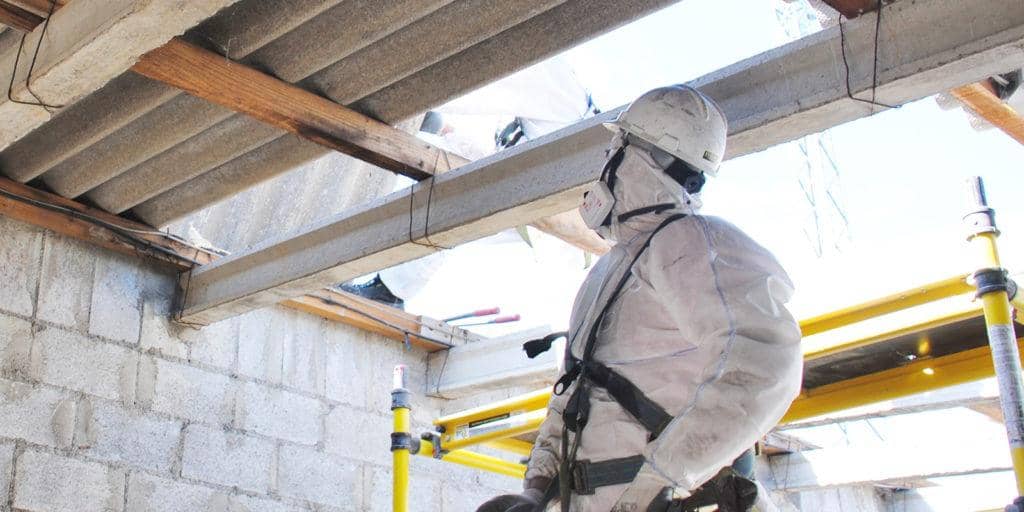
Buying a property is a significant investment and one that people understandably want to feel confident in before they commit a significant proportion of their life savings. So receiving a survey report that identifies a number of defects can be alarming. But before you panic, it’s worth noting that in reality, many of the issues that appear in surveys are actually not unusual, with some even being anticipated at certain types of property.
Here, we’ve compiled a list of some of the most common defects identified in residential survey reports.
Asbestos
As a known cause of life-threatening cancer, learning that a property you are planning on buying contains asbestos can be extremely alarming. However, it’s important to remember that asbestos was a very commonly used material in building at one time, and as such, many homes will contain the substance – often without the owner’s knowledge. Commonly found in insulation for example, asbestos is harmless unless it is disturbed; it is the dust of the substance that is dangerous. If asbestos does show up in your survey, it’s important to take note where it is so you can be mindful of its location when undertaking any work on the property in the future.
Insulation (or lack of)
Any new property that is built today must comply with EPC standards so far as thermal insulation is concerned. This is to ensure that a minimum standard is met to reduce heating costs, therefore protecting the environment. However, at the time when many older properties were built, no such regulations were in place, and consequently, many houses will fail to meet modern insulation standards. Where insufficient insulation is identified, some forms of remedial action such as installing loft insulation, are relatively straightforward. Poor insulation in cavity walls and inefficient heating systems are not uncommon, although they can be trickier to address and will require a professional contractor.
Roofing
Roofing issues are extremely common in residential property surveys, both in pitched roofs and any areas of flat roofing. Smaller defects such as cracked tiles or the presence of moss are relatively cheap and easy to address and shouldn’t cause any ongoing issues if fixed properly. Where more significant problems are identified, such as leaks, a sagging roof, or a roof in such a poor condition that a full replacement is required, you will need to employ a specialist roofing contractor. The cost of this can be significant, and if scaffolding is required, this will usually incur an additional cost.
Damp
Damp is not an uncommon issue to find in a property – especially if it is an older home. There are several ways to approach damp, which can be determined by the type of damp that is present. Condensation is one form of damp, usually resulting from lack of air movement or sufficient extraction or ventilation. Although usually relatively easy to remedy, condensation can lead to rot or mould if not tackled, so is worth addressing. Penetrating damp is slightly more serious and refers to water leaking into the house. Often the result of broken guttering or missing roof tiles, once the source of the leak is identified and fixed and the area where the leak has penetrated has been treated and redecorated, the problem should be sorted.
Rising damp is perhaps the worst form of damp to be identified and is caused by water being drawn up into the house from the ground. Addressing rising damp usually involves the professional installation of a damp-proof membrane or damp-proof course. Depending on the extent of the damp, this can be quite a big job, and involves knocking off the existing plaster and re-plastering afterwards.
Timber issues
From rot to woodworm, there are a number of different forms of timber issues that a survey might identify. Decay or rot of timber is the result of the wood being exposed to moisture, and can happen if a leak is left unresolved. If rot has set in and the joists are badly affected, this may require replacement, which will involve a large amount of disruption to the areas involved. Woodworm is another common issue in older houses and should be treated as a matter of priority if identified. A timber specialist will be able to identify the extent of the damage and may be able to eradicate the issue by applying a treatment. If the infestation has taken its hold or if the existing damage is too severe to repair, again, it may be necessary to replace areas of floorboards or joists.
Matthew Parkinson Surveyors regularly assists homebuyers with a range of survey reports, including RICS Home buyer Surveys and Building Survey Reports. For more information or to obtain a quote, please get in touch.





